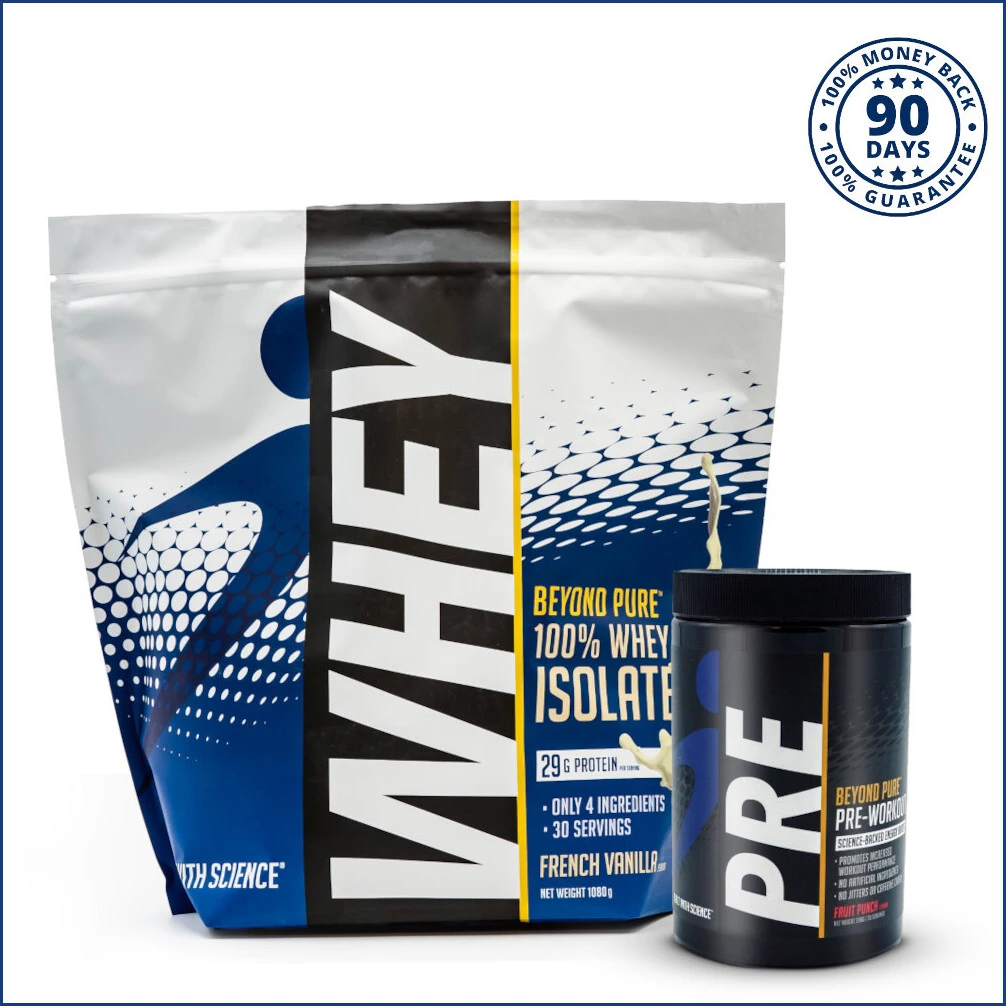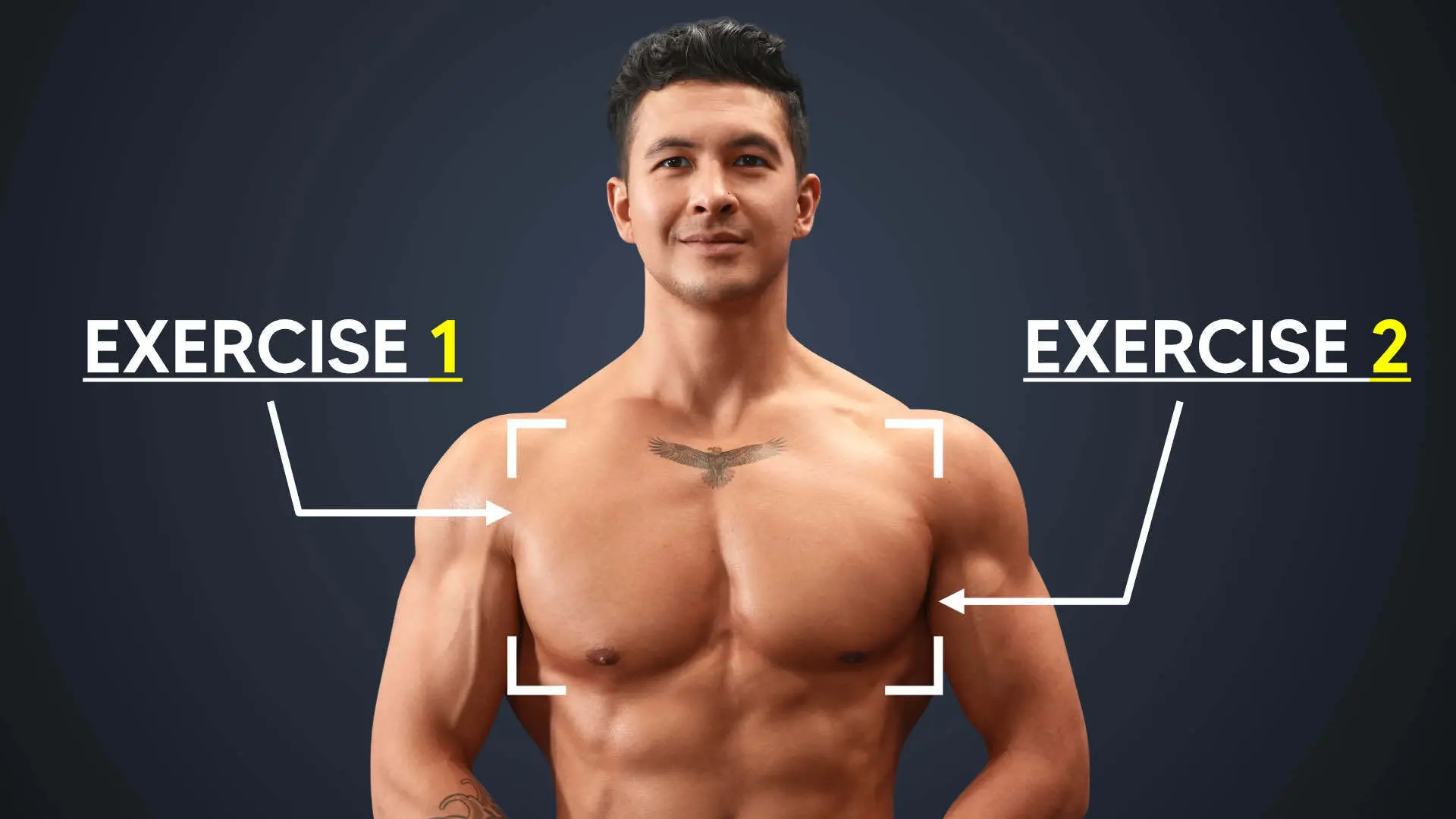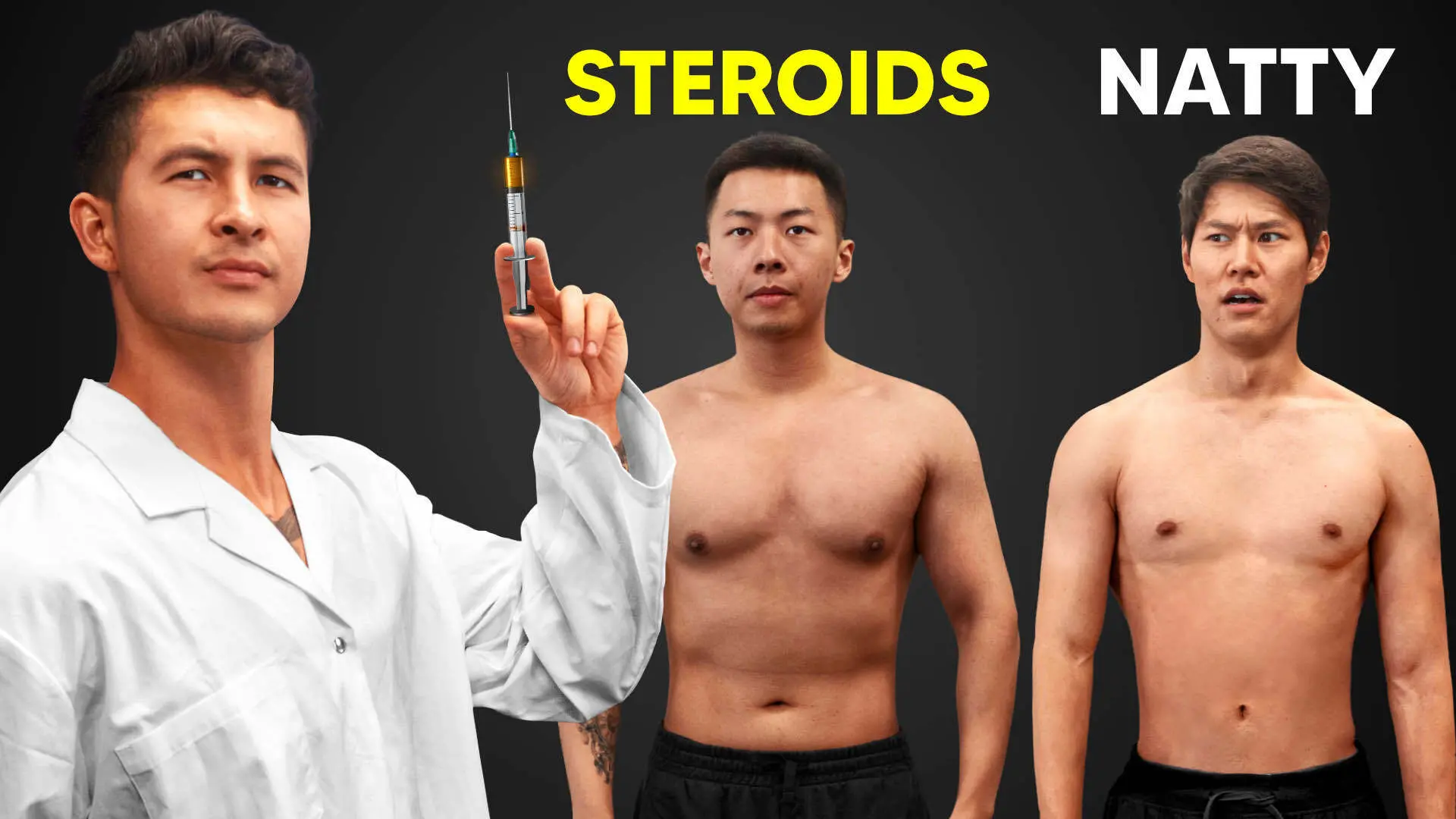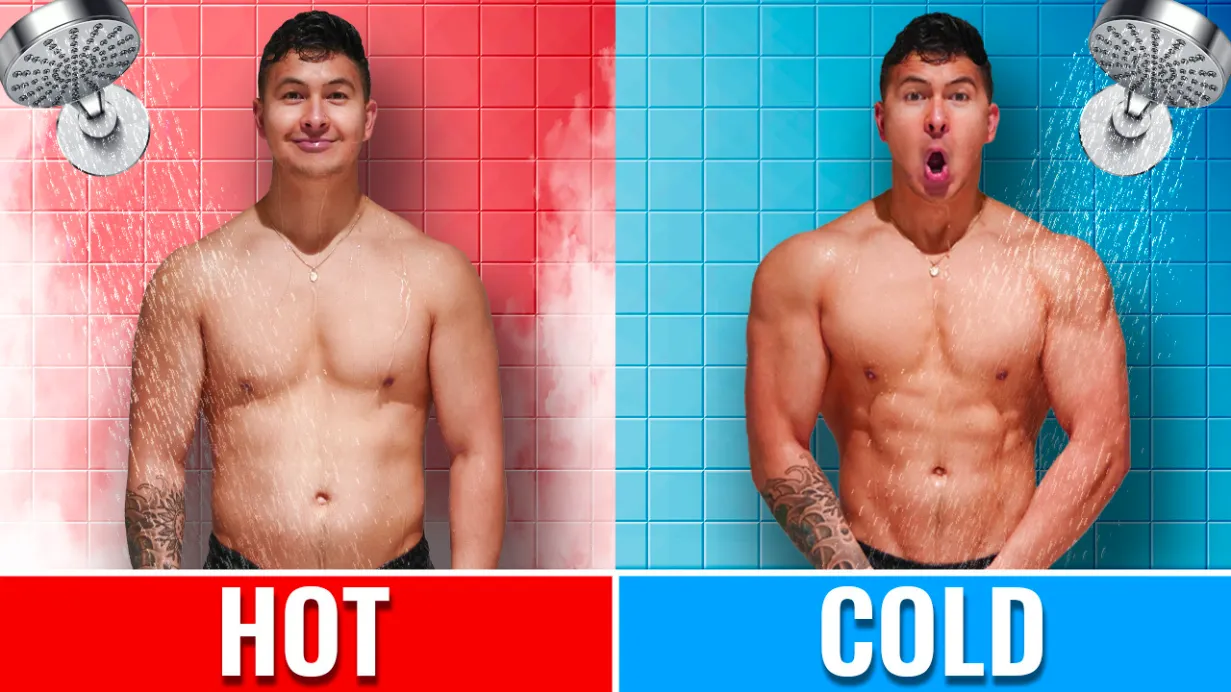
Cold Therapy: What Are The Benefits?
Are Cold Showers Good For You?
What would happen after 30 days, or 1 month … if you took … a cold shower … every single day?
Today, we’re doing a deep dive into the science, and I’ll also reveal the results I got from doing the 30-day cold protocol I’ll share later on.
Now, it seems like wherever you look, all the top athletes and celebrities are taking cold showers, ice baths, and just using cold therapy in general.
And honestly, after looking at the research, I can see why they do.
Even if you’re thinking there’s no way you’re gonna start taking cold showers, trust me, this article might make you reconsider. But you'll (understandably) have questions:
- What are the specific benefits you can expect?
- How cold does the water need to be?
- Can it help with fat loss or building muscle?
- Are there any side effects you should know about?
What Are The Benefits Of Cold Shower?
Well, you’ll start experiencing benefits right from day 1.
It will be the hardest day but also the most rewarding. You see, exposing your body to cold seems to release three key hormones:
- Norepinephrine
- Epinephrine
- Dopamine
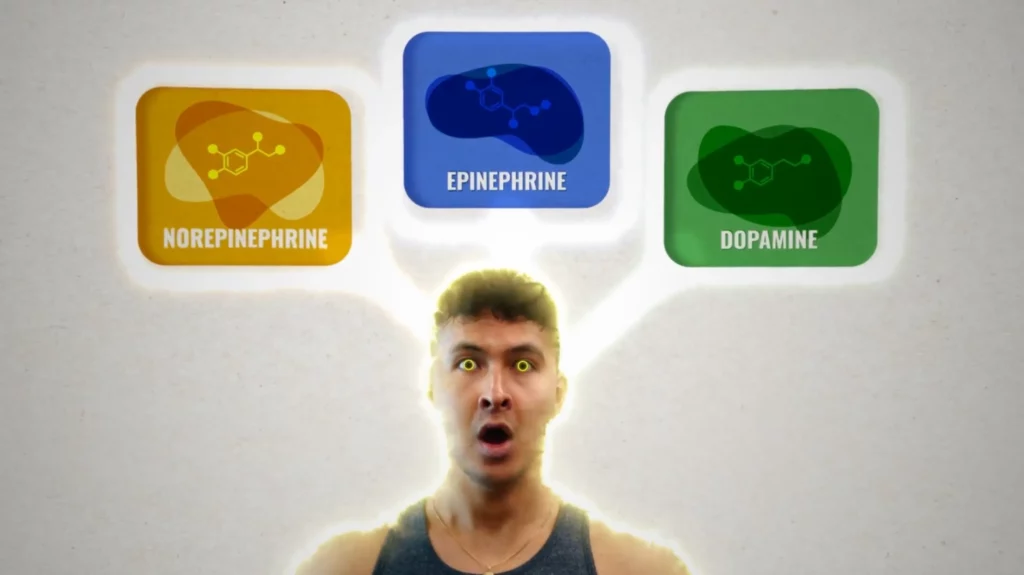
Together, these stimulate what’s known as your sympathetic nervous system, or your “fight or flight” response.
This is what makes you panic and feel as if you need to escape or yell during the cold exposure.
Now, the cold not only elevates these hormones during the exposure, but it keeps them elevated for an extended period of time afterward.
Anywhere from 30 minutes to several hours — depending on how cold the water was and how long you were in it.
The benefit of this is improved mood, energy, and focus. Similar to the feeling you’d get after going for a run or doing a workout.
Coffee actually works in a similar way by activating the sympathetic nervous system.
It’s why many people find they no longer need to rely on coffee in the morning if they instead just jump straight into the cold!
But to experience these benefits, there are a few things you need to know.
What Temperature Is Considered A "Cold Shower?
First, the temperature of the water needs to be cold enough.
One study compared cold water immersion at 3 temperatures:
- 90 degrees Fahrenheit (32 degrees Celsius)
- 70 degrees Fahrenheit (20 degrees Celsius)
- 60 degrees Fahrenheit (14 degrees Celsius)
The researchers found a significant increase in dopamine and norepinephrine in the 60 degrees group but not the others.
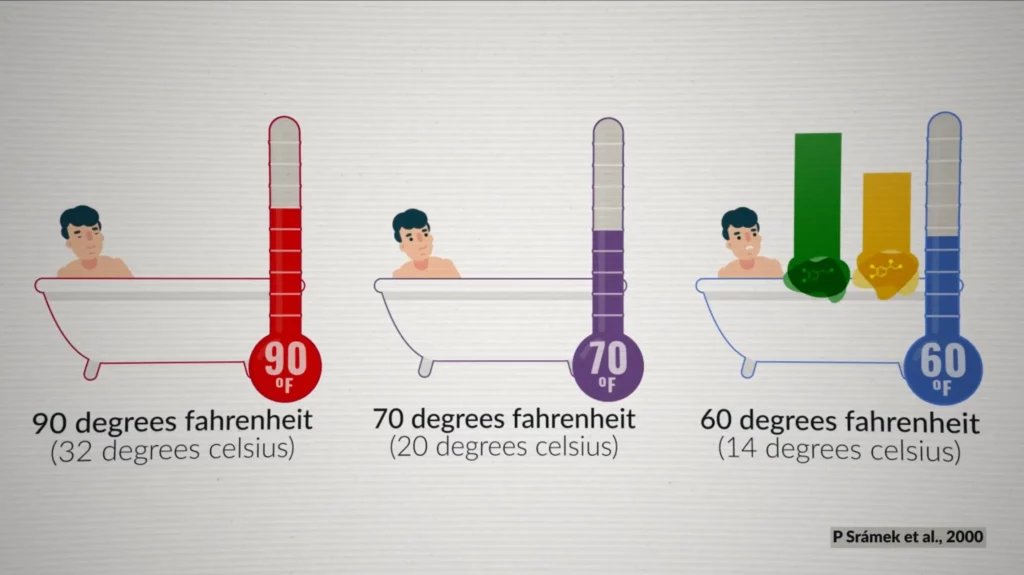
Now, I measured a couple of showers after setting it to the coldest setting, and it clocked in at about 46 degrees Fahrenheit (8 degrees Celsius).
I am from Canada so the water is a little colder here, but still, I’d expect most showers should be able to reach below that threshold.
But how can you tell if it’s cold enough without a thermometer?
Well, research suggests it should trigger what’s known as the “initial inspiratory gasp”. This is the deep breath your body instinctively takes as soon as you feel the cold.
But you also need to stay in the cold for long enough.
The thing is, the subjects in the study I mentioned earlier sat in cold water for an hour. I don’t know about you, but I’m not planning to take hour-long showers every day.
I did, however, find several studies showing benefits with shorter durations of even just 20 seconds of cold exposure.
But in most cases, they used an ice bath instead of a shower, so the body could be fully immersed.
This doesn’t mean a 30-second cold shower won’t do anything though.
Even if your hormonal increase isn’t significant by research standards, you will very likely still feel a benefit and an increased mood.
I mean, I sure do!
But to keep feeling that mental benefit over time, there’s one more thing you need to know. It’s called attenuation.
Over time, your body adapts to the cold and the hormonal response seems to die down.
Once you notice this, you can try making the water colder or staying in it for longer to continue feeling a benefit.
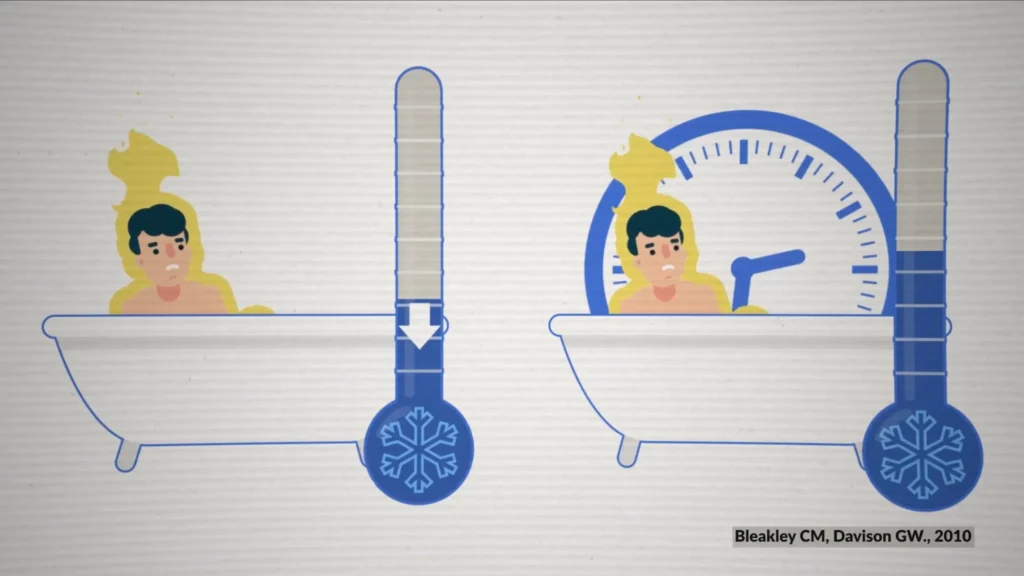
Does Taking A Cold Shower Help You Lose Weight?
Alright, we’ve talked about the mental benefits but what about fat loss?
A common theory is that exposure to the cold boosts your metabolism since your body is trying to heat up.
This burns more calories and can accelerate fat loss as a result. What does the research say?
Well, it’s true — cold exposure can boost your metabolism.
Most research suggests that exposure to the cold increases your metabolism by around 15%. A 2021 study, however, found that cold water immersion increased calorie burning far more than this; up to 50% in well-trained athletes.
This took their estimated daily calorie burn from 2,000 calories per day all the way up to 3,000 calories!
Given that one pound of fat is equivalent to roughly 3,500 calories, this would, in theory, mean the subjects could burn off a pound of fat every three days just from their cold protocol.
However, before you plan your move to Antarctica, there are two catches you need to be aware of:
- Duration of immersion: The subjects in the study were immersed in the cold for over 3 hours! The average shower length is 8 minutes, and the amount of time you’d spend showering in the cold would be only a fraction of that.
- Metabolic rate measurement: The researchers tested their metabolic rate while the subjects were in the cold. They used that value to estimate how many calories they’d burn for 24 hours. But this assumes they’d continue burning calories at the same rate for the rest of the day, which is very unlikely.
So, even if you crunch the data while being super optimistic, it likely wouldn’t end up anywhere close to enough to make a meaningful effect for fat loss (~5-20 extra calories per day) unless you quite literally sat in cold water all day every day.
But, that said, there was a study released just this year that throws a curveball to what I just said and even took me by surprise.
Subjects were put into a weekly cold exposure protocol of five 30-second cold showers (at 50 degrees Fahrenheit) and one 2-minute cold water immersion to the neck (at 37 degrees Fahrenheit).
After each cold exposure, they let their bodies naturally warm up for 10 minutes.
Meaning they ended the protocol with the cold rather than turning the shower to hot water right after doing the cold water.
After 8 weeks of this, the men in the study lost just over 1 centimeter off their waist and experienced a significant reduction in their visceral belly fat. This is the dangerous belly fat deep within your organs.
The women, however, didn’t experience any significant effects, and it’s unclear why.
Now, although at least for men this sounds promising, I decided to take a closer look at the study and found some serious issues.
You see, the authors only reported the results from the "cold" experimental group.
But to truly understand whether the results were caused by the cold, you need to compare them against a control group.
For whatever reason the researchers decided not to do this, even though they took the time to include a control group in the first place.
But if you do compare the two groups, you’ll find there wasn’t any significant difference between them.
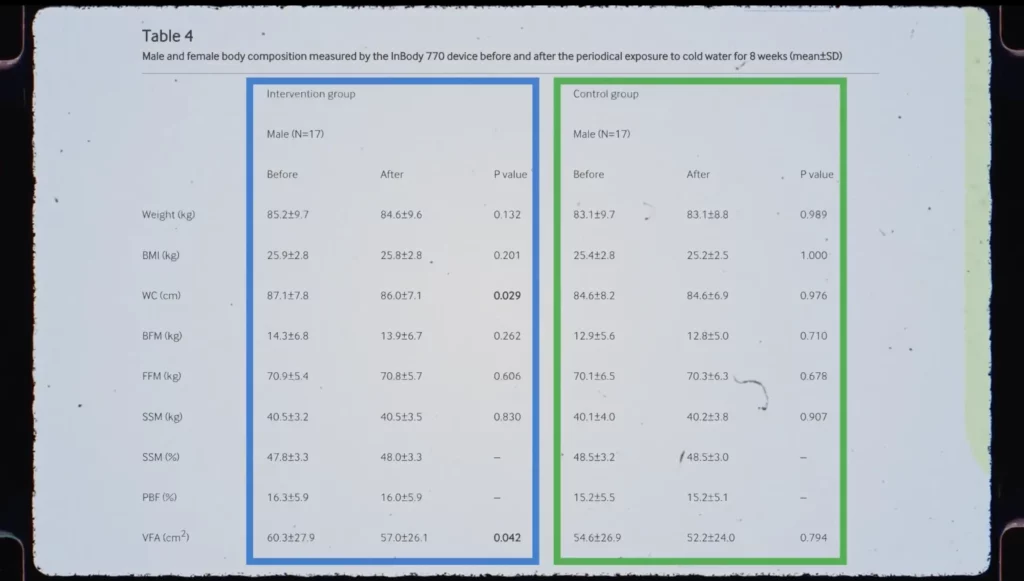
This was just one of the many issues with this paper, which is why I wouldn't feel confident with any of its findings.
For now, a far more effective and proven way to lose fat is to use a well-designed nutrition and training plan. And if you need help setting one up using the latest science, just take my 30-second quiz to find the best program for you and your body below:
Click the button below to take my analysis quiz to discover the best program for you:
↓
Muscle Recovery And Growth After Cold Therapy
So, we’ve talked about your mood, and we’ve talked about fat loss.
But what about muscle recovery and growth? How does cold exposure affect that? Well, this is where things get really interesting.
So, ice baths have long been used as a recovery method for top-level athletes.
And for good reason. They’ve been shown in multiple studies to speed up recovery by reducing muscle soreness, fatigue, and inflammation after a training session.
This is great for athletes who need to recover quickly between events. But if you're looking to build muscle and strength, this may actually be a problem.
You see, after a workout, your muscles temporarily become damaged and inflamed.
It’s part of their recovery process to grow bigger and stronger. Taking ice baths immediately after your workout can interfere with this process by reducing inflammation.
This is one of the possible reasons why three studies (this, this, and this) have now shown that post-training cold water immersion significantly decreases muscle growth.
So, if you want to maximize growth and strength, you definitely want to avoid ice baths immediately after a workout.
Either do it before the workout, at least 4-6 hours after your workout, or on a separate day altogether.
For example, I personally do them on my rest day and several hours after my leg day to take advantage of the recovery and soreness benefits without impairing my gains.
As for cold showers, the studies I mentioned all used ice baths where subjects stayed immersed for anywhere between 10-20 minutes.
So they were pretty intense protocols.
Based on that, I would speculate that a quick cold shower after a workout wouldn’t have any negative effects on muscle growth and isn’t really something to worry about.
But on that note, it also probably wouldn’t do anything meaningful for your recovery so it might not be worth the potential downside.
Building Resilience And Grit
Alright, so we’ve talked about mental benefits, we’ve talked about fat loss, and we’ve talked about muscle recovery and growth.
But there’s one more benefit you should know about.
It’s the main reason why I personally make the effort to incorporate cold showers and ice baths into my routine.
You see, forcing yourself to mentally withstand a stressor like the cold is an incredible way to strengthen your mind.
One of the ways it does this is by activating an area of your brain that suppresses impulsivity.
This can help you remain calm and not overreact whenever stressors come up in your life.
But this also helps build tremendous resilience and grit that can positively transfer into other areas of your life.
For example, during a tough leg workout, just like I do with the cold, I simply view the pain as a sensation. A sensation that I can overcome with my mind to push my body past my mental limits.
Sample Protocol
Now, for those interested, this is the protocol I’m currently following.
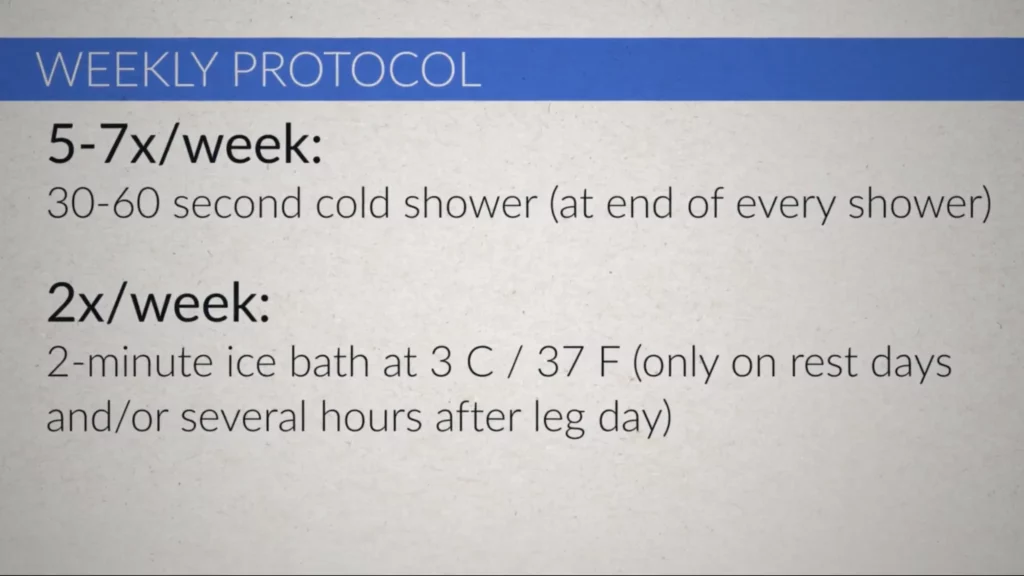
I’d recommend starting with cold showers, working your way up to 30 seconds to a minute, and then over time, try to stay in it for longer or if possible make the water even colder.
And to further intensify the benefits, consider investing in a cold tub which will also give you some of the recovery benefits that showers just don’t seem to provide.
Now, although all of this probably won’t do much for fat loss, click here for what I believe is the most underrated exercise you can start doing today to lose fat faster.



